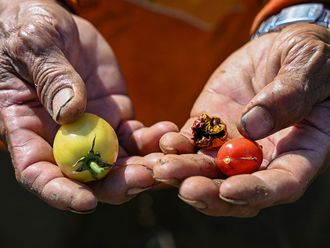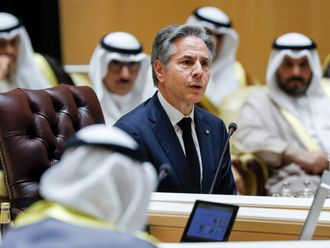
Manila: The Philippine government and communist leaders will reach a political settlement within this year as negotiators are simultaneously exchanging drafts of proposed economic and social reforms; political and Constitutional reforms; and a proposed joint ceasefire agreement, a peace advocate said.
“The political settlement will be finished within the year (2017). President Rodrigo Duterte is open to leftist ideas,” Rey Casambre of Philippine Peace Centre told Gulf News, adding the government and the National Democratic Front NDF), the negotiating arm of the 48-year old Communist Party of the Philippines and its armed wing, the New People’s Army (CPP-NPA) are succeeding on all “contentious fronts” after on and off peace talks that began in 1992.
Big area of agreement
“There has been a big area of agreement on proposed provisions of the Comprehensive Agreement on Social and Economic Reforms (CASER) and Comprehensive Agreement in Political and Constitutional Reforms (CAPCR). Both camps have exchanged their respective drafts on CASER and CAPCR. Both sides (now) adhere to human rights protection,” said Casambre who is privy to the talks.
Giving details on agreed social and economic reforms, Casambre said, “The government is amenable to proposed implementation of a genuine land reform; free land distribution or transfer of land titles at minimal cost; national industrialisation — despite its neo-liberal policies; and expanded social services.”
CASER shall be ready for signing in July, Jose Maria Sison, founder of the CPP-NPA, predicted after peace talks held in Rome in January 2017.
Explaining areas of agreement on CAPCR, Casambre said, “The NDF is open to Duterte’s proposed federal form of government and parliamentary system as long as there are safety nets against corruption, political dynasty, and landlordism.”
In Rome, Sison also announced: The NDF “will maintain its alliance with the Philippine government and the Duterte administration by cooperating in the founding of the Federal Republic of the Philippines, creating a parliamentary system, and making a new constitution that upholds, defends and promotes national independence, democracy, economic development, social justice, cultural progress, and independent foreign policy.”
The date of CAPCR’s signing was not given.
Explaining why CASER and CAPCR must be signed early, Sison said they will be tested for two years before Duterte’s term ends in 2022, adding they will “lay the full basis of the Comprehensive Agreement on the End of Hostilities and Disposition of Forces as early as 2020—2021.”
But a bilateral ceasefire will also be signed when both camps meet in the Netherlands in April, said Casambre, adding, “The NDF sees the bilateral ceasefire as good for the people.”
In January, the government and the NDF have exchanged drafts on the creation of a joint monitoring committee — it will be in charge of overseeing the implementation of the proposed bilateral ceasefire.
Leftist leaders have called for the unconditional release of 400 detained political prisoners in response to Duterte’s condition that a government-NDF bilateral ceasefire must first be inked.
They have also expressed concern over the killing of political activists by the government’s counter-insurgent Oplan Bayanihan and Oplan Kapayapaan in far-flung provinces; and the killings of drug users, drug pushers, and drug lords by the government’s “Oplan Tokhang” and “Double Barrel”.
Reaching 25,000 during the time of former President Ferdinand Marcos in the 70s; and shrinking to 5,000 after his ouster in 1986, the armed group has remained in control in far-flung villages that hardly receive government services.












